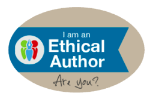






.jpg)

There is a saying that ‘Beauty is in the eye of the Beholder!’ However, when it comes to buying a product, especially books, it’s how it looks which first attracts any buyer. Today I am going to chat about some of the pet hates that successful authors have about book cover design, which may just help you avoid the all-
1 Home-
Please, do not insist that the wonderful drawing done by your kid, mother, aunt, niece, or your talented artist friend will be perfect for what you have written. Unless that person is a professional illustrator it really will not come up to scratch. And the same goes for that fantastic sunset, forest, waterfall, or any other pic you took on your iPhone last summer.
2 Images scraped illegally from the Internet
This one is certainly a big no, no. Stealing someone else’s artwork from off the internet is most definitely out of the question. Remember, gone are the days when things were classed as being in the public domain. Nowadays, all images are probably copyrighted. I know someone who once held a competition for cover designers only to discover that one of the entrants had used images held under copyright. Thankfully he didn’t go for that design, but it’s a definite peril with the more casual designers.
3 Inappropriate cover models
Always ensure your cover is suitable for the theme of your story. An historical novel cover which features characters with faces which are from the wrong period just won’t do. It is here I stress my favourite mantra -
4 Indecent cover models
To be honest, unless it is absolutely necessary to the genre, don’t use half-
5 Flat typography
Text effects can cause a lot of problems as people often have no idea how to subtly use text effects to make their cover readable. Even using a large size font sometimes means we have no idea what the writing is actually saying. Often people either use dreadful fonts, or just drop flat text on top of an image, expecting it to be readable. Try to find a font that is also suitable to the period and theme of your story.
6 Over-
There is, of course, the opposite of flat text, which is just as bad! Some covers, especially those created by an amateur designer, means they have used every Photoshop effect they can find: embossing, bevelling, strokes, drop shadows, AND glow. Often, all at the same time and cranked up to the maximum… It brings tears to the eyes but not in a good way!
7 Overcrowding
Often some book covers use too many elements. For example: five different fonts, three images, a testimonial and a sales splash. This means everything is competing for attention. Remember, less is often more!
8 Mismatch to genre
One of the worst things you can do is to give your book a cover design which doesn’t reflect its genre. This means the reader is easily misled as to the book’s contents.
Here are some helpful examples:
Crime and thrillers tend to have large sans serif titles and large author names, often with moody photos of empty streets, forests or winding roads, frequently with a shadowy figure (sometimes in a red coat) walking away.
Romantic comedy and chick-
Sci-
Historical leans towards elaborate fonts that are often part of the background image.
Literary fiction and YA will often break all the rules.
Not sure what image or wording would be right for your book’s genre? The easiest way to find out is to search Amazon Books for the various genres. There are enough examples for you to compare and choose from.
Or, better still take a trip to your local bookstore and peruse the section where they would house your book. You should start to see a pattern. And, you’ll probably get some really cool ideas. However, don’t copy any of them. In this instance, imitation is not the best form of flattery.
Copyright © 2021 AB Business Group. All rights reserved.